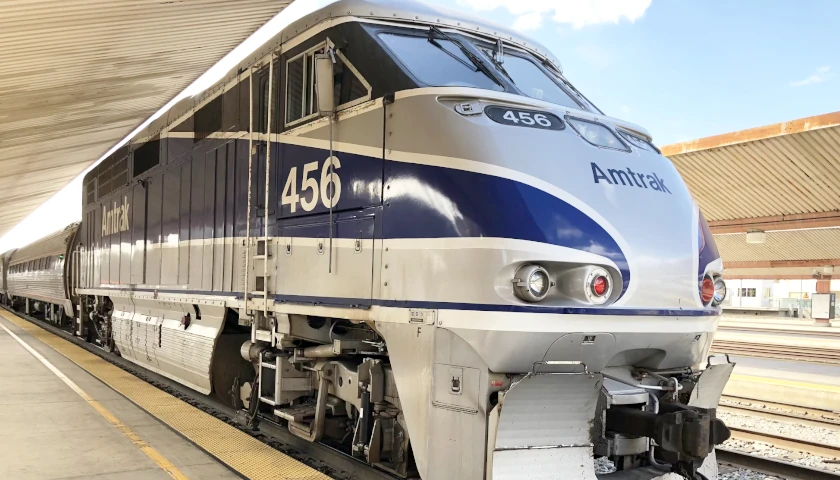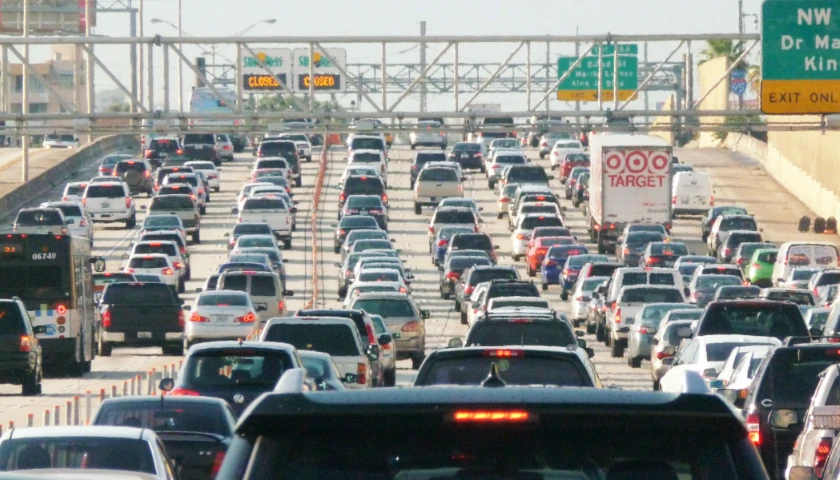Ohio Governor Mike DeWine signed a nearly $13.5 billion state transportation budget on Friday, including rail safety measures that lawmakers added in reaction to the February 3rd train derailment and toxic chemical spill in East Palestine.
With oversight from the Ohio Department of Transportation (ODOT) and the Public Utilities Commission of Ohio (PUCO), among other provisions, the railway safety measures call for two-person crews for freight trains and requires the installation of wayside detectors at shorter distances, every 10 to 15 miles, to help identify issues. The Federal Railroad Administration currently permits the placement of some wayside devices up to 25 miles apart from one another.
Additionally, the budget requires PUCO to investigate the various types of railroad detectors and cameras currently in use and report its findings to the General Assembly.
According to DeWine, the train derailment in East Palestine has made clear the need to further regulate railroad operations in Ohio and to put more focus on safety. DeWine said that by signing the budget into law it helps ensure that Ohio railroads follow best practices.
“We are ensuring that Ohio’s railroads follow the best practices in monitoring the railroad equipment and holding them responsible for their actions,” DeWine said.
It is still up for discussion whether the state has the authority to enforce these rules. An industry trade organization, the Ohio Railroad Association, asserts that federal law preempts several aspects of the measure.
“Simply put, both provisions added by the House are invalid because of federal law,” Art Arnold Executive Director of the Ohio Railroad Association said.
According to state legislators, the General Assembly can enact state-wide safeguards to help secure constituents.
The adoption of those clauses, according to DeWine, establishes Ohio’s position as being resolute on the train safety issues that the East Palestine derailment brought to light. He stated that he hopes the federal government will also take action to improve train safety.
Congress is contemplating the bipartisan Railway Safety Act of 2023 that, among other things, would also mandate the continued use of two-person freight train crews, increase the number of hot bearing detectors installed, and ensure that railroads inform the states of the hazardous materials they are carrying.
The transportation budget also funds bridges and highway projects over the next two years, lowers registration fees for plug-in hybrid vehicles, and raises the upper limit on how much a municipal government can spend on tasks like bridge repairs before it must put the jobs out to bid to private contractors.
The governor signed the transportation budget with no vetoes, something he said he’s never done since taking office. It goes into effect July 1st.
The transportation is one of three budgets that lawmakers must pass this year. Both the workers’ compensation budget and the two-year $87 billion state operating budget are still in House committees. Those two spending plans must be passed and signed by the end of June.
– – –
Hannah Poling is a lead reporter at The Ohio Star and The Star News Network. Follow Hannah on Twitter @HannahPoling1. Email tips to [email protected]





